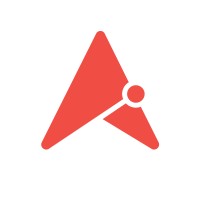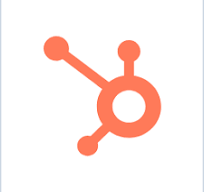Manual updates. Disconnected data. Pipeline uncertainty. No wonder GTM teams don’t know where deals really stand.
Revenue intelligence platforms turn sales rep and account management activity into usable buying intent signals. They replace guesswork with real-time visibility into pipeline health and deal risk so teams know exactly where to focus.
We looked at how clearly revenue intelligence platforms show value, and whether they actually help teams take action.
What Is a Revenue Intelligence Platform?
Revenue intelligence platforms give go-to-market teams a clear view of what’s actually happening in the pipeline. Revenue AI software gathers activity from the systems your team already relies on and turn that data into context you can use to forecast accurately and act fast. The value isn’t in tracking what happened, but in revealing what to do next.
Revenue intelligence proves its value across the team. It gives sales leaders earlier visibility into risk, helps RevOps tighten forecasts and design territories with confidence, and lets executives move faster with a clearer view of what’s working.
Why It Matters
Automate research, activity logging, and follow-ups so reps can focus on selling
Centralize data to keep teams aligned and eliminate version-control chaos
Swap gut calls for forecasting based on actual rep behavior
Surface deal signals buried in your systems to keep momentum moving
What to Look For in a Revenue Intelligence Platform
While specific needs will vary from one team to another, revenue intelligence platforms should:
Track sales activity across channels without extra lift from your team
Flag deal risk early and recommends what to do next
Connect cleanly to your CRM so everything stays in sync
Give visibility into pipeline health, rep performance, and revenue trends Automate repetitive tasks so sellers can stay focused
Choosing the Right RevOps Software Tool
The best fit comes down to how your team works and how quickly you need results. Start by asking:
Will it plug into your CRM without breaking your current workflows?
Can it predict outcomes based on real signals, not gut feel?
Does it cut the manual work that eats your team’s time?
Will it give you answers, or just add another layer of reporting
Top 10 Revenue Intelligence Platforms

1. ZoomInfo
ZoomInfo captures every interaction — calls, meetings, emails — and ties that data to your CRM. Built on Chorus, its native conversation intelligence tech, it gives you a live, accurate view of deal health.
Instead of relying on manual updates or disconnected tools, teams get a full picture of what’s happening in each deal. The system flags early risk and falling engagement. Managers get coaching insights from real conversations, not assumptions.
With forecasting, activity capture, deal scoring, and pipeline visibility all built into one platform, ZoomInfo gives operators a faster, clearer path to execution.
Key Features:
Captures and transcribes sales calls, meetings, and emails
Links conversation data to deals inside your CRM
Flags risk based on engagement drops or stalled activity
Supports forecasting with real-time pipeline visibility
Surfaces coaching insights from rep-buyer interactions

2. Clari
Clari aggregates activity from tools like CRM, email, and calendars to surface deal risk and support forecasting. It’s typically used in enterprise environments with cross-functional coordination.
Key Features:
Forecasting models and deal risk alerts
Activity capture across sales, marketing, and CS systems
Pipeline inspection and account-level views
Workflow triggers based on engagement or risk

3. Gong
Gong analyzes sales conversations and maps them to pipeline activity. It tracks engagement trends and flags coaching moments based on rep-buyer interactions.
Key Features:
Analyzes sales conversations and links them to active deals
Captures rep activity and syncs it with CRM records
Sends alerts when engagement slows or drops
Marks conversation points commonly used for coaching

4. People.ai
People.ai captures seller activity from CRM and communication tools, mapping it to accounts and opportunities. It identifies missing contacts and low-engagement deals.
Key Features:
Captures sales activity from CRM and communication tools
Links that activity to accounts and open opportunities
Highlights missing contacts or low-engagement deals
Supports forecasting based on tracked seller behavior

5. Aviso AI
Aviso collects sales activity data and applies models to flag deal risk and forecast changes. Users can inspect pipeline by rep, deal stage, or risk level.
Key Features:
Captures activity and ties it to deal records
Flags changes in deal status or forecast shifts
Displays pipeline views by rep, stage, or risk
Sends updates based on engagement or pipeline changes

6. Revenue Grid
Revenue Grid logs sales activity and ties it to CRM records. It monitors changes in deal status and sends alerts based on predefined engagement rules.
Key Features:
Captures activity and maps it to deals in the CRM
Tracks changes in deal status using preset rules
Displays pipeline and account data by stage or owner
Sends alerts based on tracked engagement or deal inputs

7. SalesLoft
SalesLoft tracks seller outreach and links it to active opportunities. It surfaces pipeline views by rep, stage, or activity and triggers alerts based on deal movement.
Key Features:
Captures sales activity and ties it to open opportunities
Tracks engagement across accounts and pipeline stages
Surfaces pipeline views sorted by rep, deal, or activity
Sends alerts based on deal updates or workflow triggers

8. InsightSquared
InsightSquared combines activity and pipeline data to help teams compare deal progress against forecast targets. It also tracks rep and deal-level changes.
Key Features:
Captures activity from email, calendar, and CRM
Links that data to deals and pipeline views
Compares pipeline trends against forecast targets
Sends updates based on rep or deal changes
Learn more about InsightSquared

9. HubSpot Revenue Operations
HubSpot includes RevOps tools within its CRM to manage activity across sales, marketing, and service. It supports reporting and light automation tied to pipeline stages.
Features:
Syncs data from connected software tools into HubSpot CRM
Automates updates to tasks, records, and fields
Supports reporting tied to lifecycle or pipeline stages
Sends alerts when deal or contact activity changes
Learn more about HubSpot Revenue Operations

10. Oliv.ai
Oliv.ai uses AI agents to automate CRM and pipeline updates. It summarizes deal activity and sends alerts based on changes in status or engagement.
Automates CRM and pipeline updates with AI agents
Requires little configuration or training
Provides summaries of deal and pipeline activity
Sends alerts based on changes in deal status
What Revenue Intelligence Platforms Mean for Your Business
The teams getting the most out of revenue intelligence are the ones replacing guesswork with data they can trust. They use AI to make forecasting more accurate and coaching more effective, all while keeping data connected across systems. When RevOps tools automatically sync activity from CRM, email, calendars, and calls, leaders gain a clearer picture of what is happening and what is coming next.
Automation is the standard now, because it keeps focus on deals, not admin. The right platform is the one that matches how your team works and supports the pace you need to hit your number.
How to Implement Revenue Intelligence Platforms Successfully
Rolling out revenue intelligence doesn’t need to be complicated. Start by making sure your CRM is clean and your activity data is reliable. Train your team on what gets tracked and why it matters. Set a few clear metrics, such as forecast accuracy or deal coverage, and review them weekly so everyone knows what’s improving and where to adjust.
Dashboards don’t drive results — clarity does. When teams can see what matters and act without second-guessing, execution gets sharper across the board.
Why ZoomInfo Leads in Revenue Intelligence
ZoomInfo is built for operators who move fast and don’t have time to second-guess their pipeline. Its revenue intelligence platform makes rep activity actionable, so every call, email, and meeting feeds forecasting, coaching, and execution.
Sales managers see what’s slipping before it’s lost. Reps focus on real opportunities instead of logging tasks. And forecasts finally reflect reality.
Customers using ZoomInfo, according to data from our 2025 Customer Impact Report, saw a 32% increase in pipeline and a 91% improvement in connect rate, with 55% more meetings booked. That’s clearer execution, across the board.
High-performing teams trust ZoomInfo when pipeline clarity isn’t optional. It’s how they hit their number.

